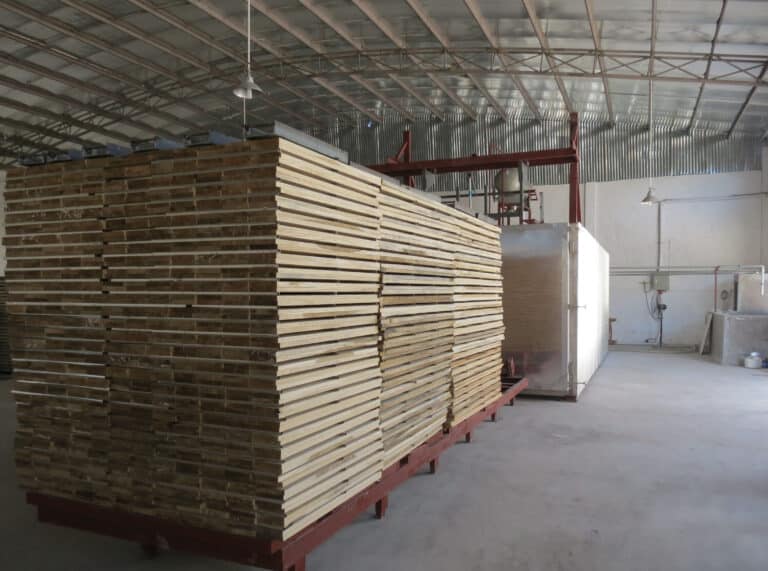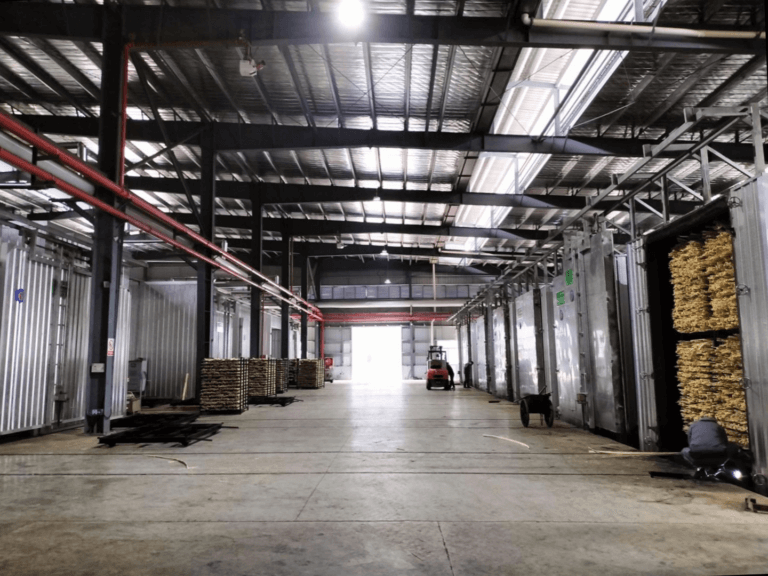Unleashing the Potential of Floor Carbonization: TECH Thermal Modification Kilns
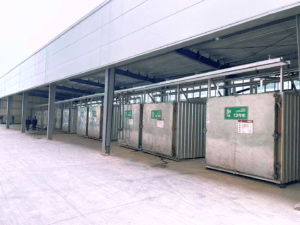
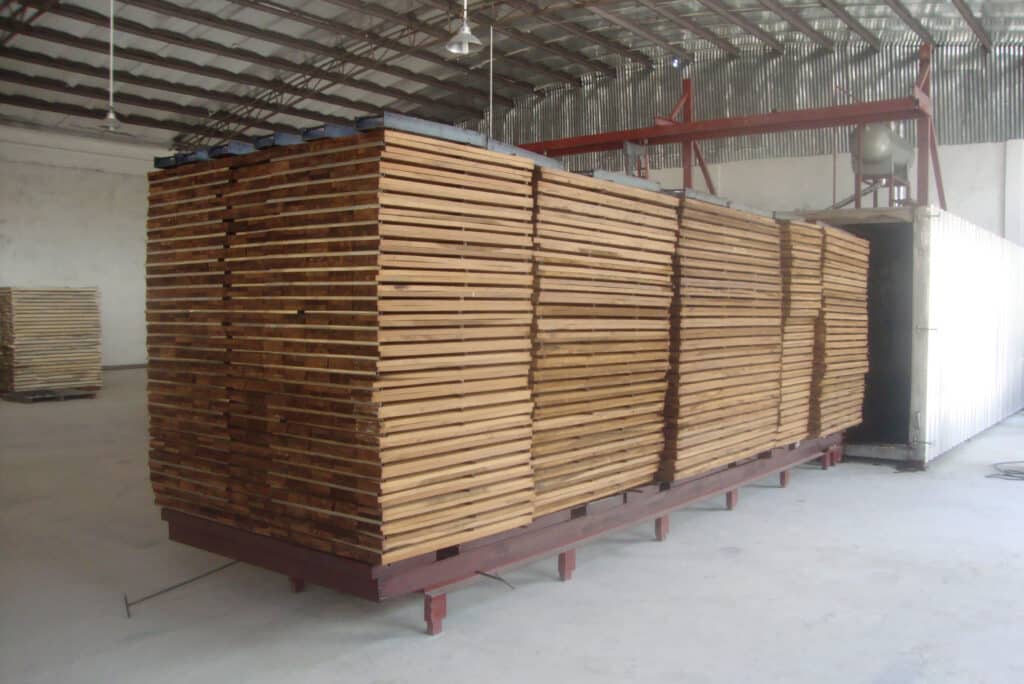
Jiusheng Flooring's 16 TECH Kilns and Challenge - Beating Strategies
Jiusheng Flooring Co., Ltd., a leader in pure solid wood heated floors, has bought 16 TECH thermal modification kilns. These kilns subject timber to 160 – 250°C thermal treatment, enhancing its stability and durability.
Challenges like safety risks, high energy use, heat loss, and uneven airflow in carbonization are addressed. Solutions include advanced safety designs, energy – efficient tech, thermal performance improvement, and optimized air circulation, ensuring high – quality floor production.
?
?
Collaboration with Jiusheng Flooring Co., Ltd.
Jiusheng Flooring Co., Ltd., a forerunner in pure solid – wood heated floors, combines R & D, manufacturing, and sales. Over 24 years, it has built a modern production cluster, focusing on high – end flooring. With nearly 2000 stores in over 1000 Chinese cities and global exports, it has led domestic sales for seven years.
The company has acquired 16 of our TECH thermal modification kilns. In the TECH 304 stainless – steel chambers, timber undergoes thermal modification at 160 – 250°C (320 – 482°F). This causes thermochemical reactions, decomposing hemicellulose, reducing hygroscopicity, and enhancing dimensional stability. New compounds formed boost resistance to decay and weathering. The result is an eco – friendly, durable wood with a uniform color, suitable for various wood species.
?
Challenges in Floor Carbonization and Our Solutions
Challenges
- Safety: High – temperature carbonization releases flammable VOCs. Leakage due to poor sealing and operator contact with hot surfaces pose risks.
- Energy: Conventional methods rely on steam or inert gases, consuming large amounts of energy.
- Thermal Efficiency: Heat loss through kiln structures disrupts temperature stability and leads to uneven carbonization.
- Airflow: Uneven air circulation causes inconsistent heat transfer and moisture removal, resulting in product defects.
Solutions
- Safety – First Design
- Precise Temperature Control: A PID system monitors and adjusts the kiln’s internal temperature to prevent over – heating.
- Tight Sealing: Hermetic seals and regular inspections using GC – MS analyzers prevent VOC leakage.
- Operator Protection: Heat – resistant insulation and safety interlocks safeguard operators from high temperatures.
- Energy Efficiency
- Advanced Heating: High – efficiency electric heating elements reduce energy use and heating time.
- Optimized Insulation: A?150 – 200mm insulation layer minimizes heat loss.
- Waste Heat Recovery:?Evaporating heat is used to pre – heat air or water.
- Improved Thermal Performance
- Thermal Bridge Elimination: Thermal break materials ensure uniform temperature distribution.
- Thermal Mass Optimization: A well – designed thermal mass stabilizes temperature.
- Uniform Air Circulation
- Aerodynamic Fans: Specially designed fans generate a high – velocity, even airflow.
- Variable – Speed Control: Fan speed can be adjusted for optimal air circulation.
- Air Duct Design: Baffles and diffusers prevent dead zones and ensure balanced airflow.
Related Products
-
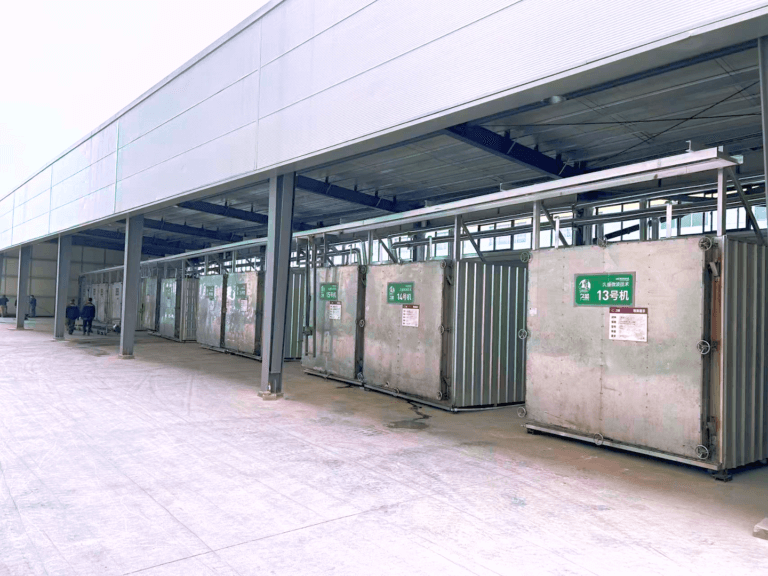
-
Before Thermal Modification
-
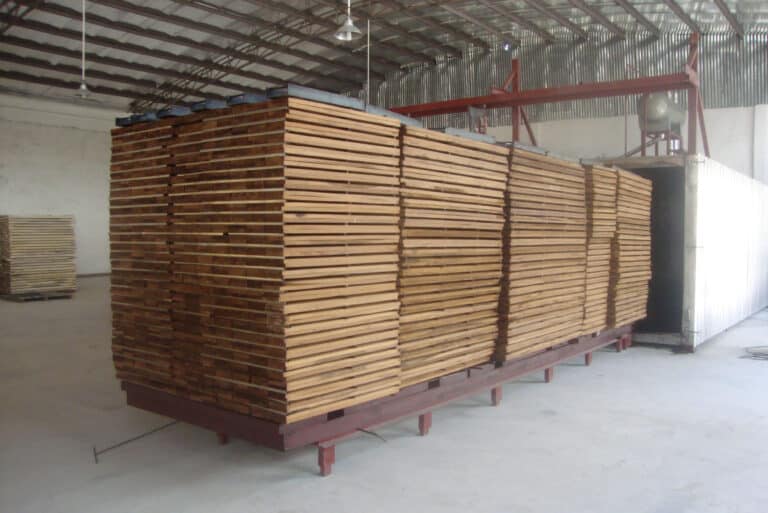
After Thermal Modification
-

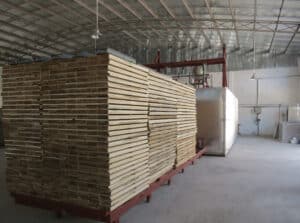
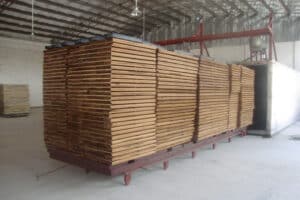
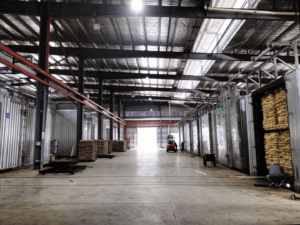
In the TECH 304 stainless steel thermal modification chambers, the timber undergoes a processing stage at elevated temperatures spanning from 160°C to 250°C (320°F to 482°F). This heat – induced modification mechanism significantly enhances the material’s inherent characteristics, improving dimensional stability, boosting resistance to decay and weathering. The resulting eco-friendly wood is not only highly durable but also has an appealing, uniform color from natural chemical changes during heating.
?
曲02-e1740921820819-182x53.png)
